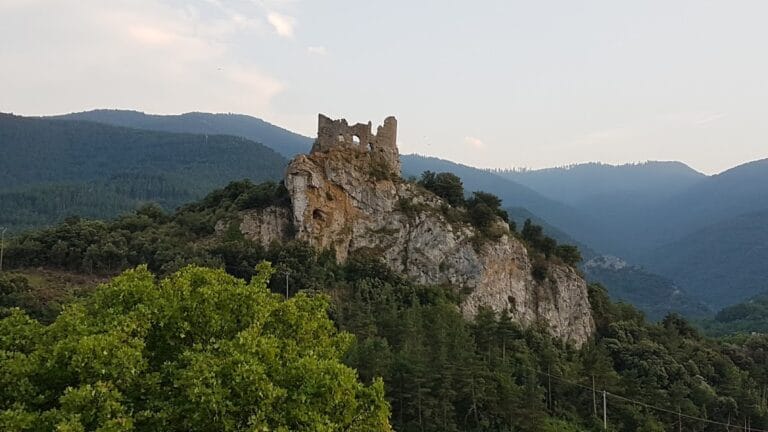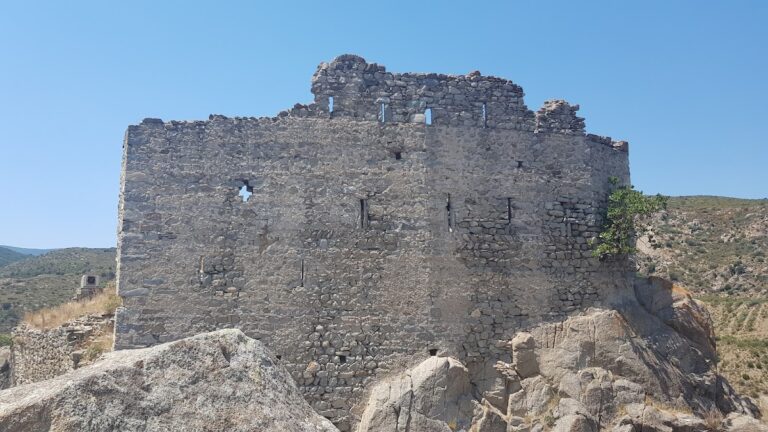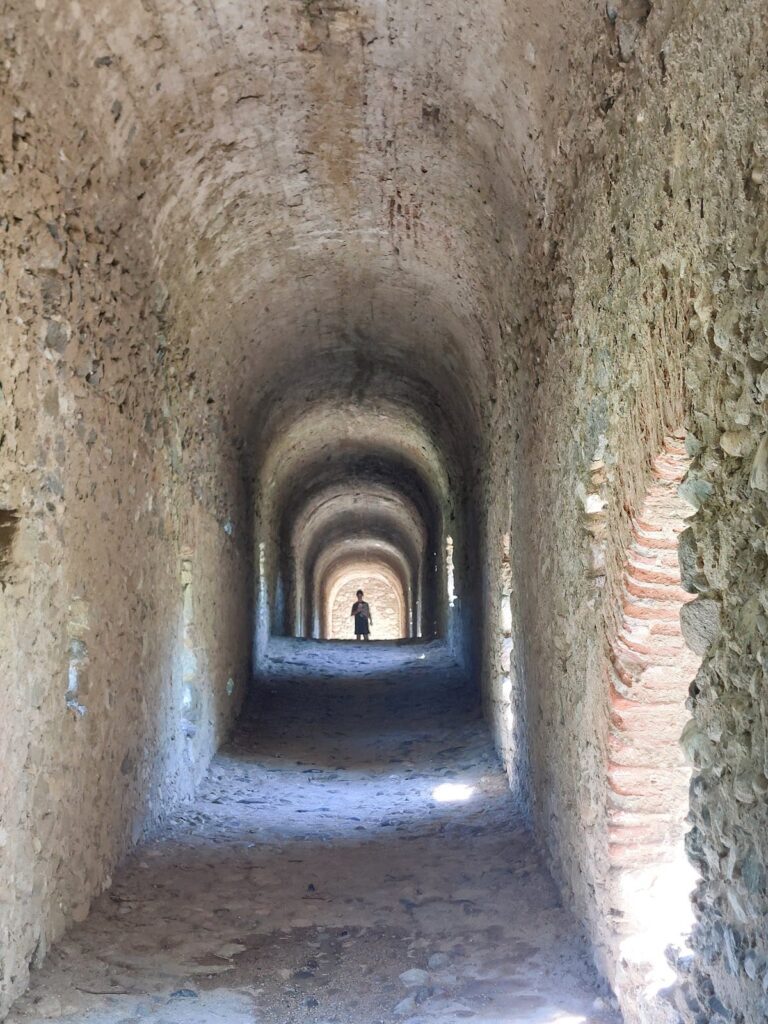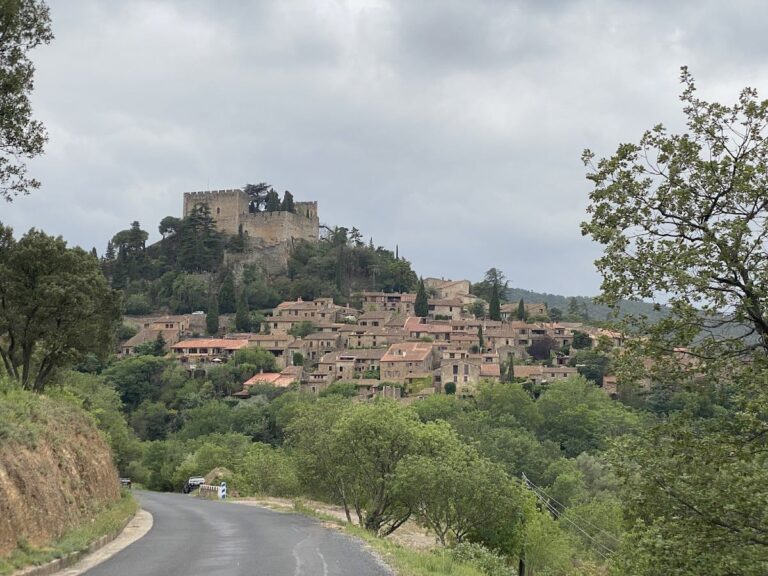Château d’Évol: A Medieval Fortress in Olette, France
Visitor Information
Google Rating: 4.6
Popularity: Very Low
Google Maps: View on Google Maps
Country: France
Civilization: Unclassified
Remains: Military
History
The Château d’Évol is located in the municipality of Olette, France. This medieval fortress was constructed by local nobility within the broader context of medieval Catalan and French influence in the Pyrenean region.
The first records of the site date back to the mid-10th century, when the area of Évol was donated by Seniofred, count of Conflent, to the monastery of Santa Maria de Ripoll. This transfer was later confirmed by Pope Sergius IV in the early 11th century. Over time, control of Évol passed through several noble lineages, initially held by the counts of Conflent and subsequently transferred to the counts of Cerdagne. Throughout the 10th and 11th centuries, the lordship also involved significant ecclesiastical ownership within the surrounding valley, reflecting both secular and religious factions’ stakes in the region.
By the 11th century, the noble family known as the Riculfi emerged as important figures in Conflent and Cerdagne, closely allied with the counts of Cerdagne and Barcelona. Their influence shaped the region’s medieval power structure. Around the mid-12th century, through matrimonial alliances and inheritance, the ownership of Évol transferred to the d’Alion family. A notable change in control occurred in 1209 when King Peter II of Aragon seized several fortifications and places, including Évol and Estavar, from Bernard II d’Alion due to neglect of feudal responsibilities. Concurrently, Évol was granted to Raymond-Roger, count of Foix, by the late 12th century, consolidating the castle’s role in regional defense and governance.
In 1335, King James III of Majorca established the viscounty of Évol, rewarding Bernat I de So by exchanging other lordships for this new title. The viscounts of Évol became influential nobles throughout the 14th and 15th centuries, frequently serving as advisors and administrators in the neighboring regions of Roussillon and Cerdagne. The castle itself served as their primary residence during this period. Military engagements touched the fortress as well; notably, in 1385, Bernat IV de So personally defended the stronghold against an assault led by Bernat d’Armanyac, emphasizing the castle’s strategic and symbolic importance.
By the 17th century, the castle had suffered damage and was partially rebuilt in 1634 to address decay. However, following the Treaty of the Pyrenees and the changes in territorial control between France and Spain, the castle was ordered to be dismantled in the late 1600s by French ministers Louvois and Vauban. This action aimed to prevent the fortress from being used by local forces resisting French rule. After the French Revolution, the property passed into private hands. In the late 20th century, the municipalities of Olette and Évol acquired the site and undertook efforts to clear and stabilize the ruins. The castle’s historic value was officially recognized in 1982 when it was designated as a historic monument.
Remains
The Château d’Évol occupies a position on a mountain spur north of the village, commanding a strategic view over the valley from its elevated site near the chapel of Saint Stephen. The castle’s overall layout is roughly square, measuring about 38 meters by 34.5 meters internally, enclosed by a quadrilateral defensive wall with circular towers at each corner. The construction principally features roughly squared schist stones, a common local building material.
One of the most significant structural elements is a large cylindrical tower located near the middle of the northern wall. This tower, measuring about 4.5 meters in diameter internally and with walls 2.5 meters thick, is the castle’s oldest surviving component. Its masonry dates back to the 11th century and likely served as the original keep, the main fortified tower of the castle. This tower still rises to approximately four meters in height today.
The remainder of the castle mainly reflects 13th-century construction efforts. While the southern curtain wall and its gateway have mostly collapsed, leaving only their foundations visible, other parts of the perimeter remain standing. The eastern and western walls, as well as large sections of the northern wall, survive intact, including the corner towers situated in the northwest and northeast positions. In contrast, the southeast and southwest towers have mostly fallen to foundations surrounded by rubble. Arrow slits used for defense pierce the walls in several places — eight on the western side, two on remnants of the southern wall, and one near the large northern tower.
Against the western curtain wall stands a once roofed residential structure about nine meters wide. This three-room building, arranged with lengths of roughly 7.5, 16, and 9 meters, served as living quarters. Remnants of six diaphragm arches that supported a wooden floor for an upper story remain, demonstrating how this upper level connected to the walkway along the castle wall. Two small postern doors provided discreet exits to the outside, one near the northwest tower and another centrally placed along the western wall, signaling later modifications to the layout. The rooms open onto the castle’s interior courtyard through square windows, integrating the living spaces with the heart of the fortress.
On the eastern side, the foundation of a rectangular vaulted chamber can be seen. This vaulted room, with a rounded barrel vault roof, is believed to have served as a cellar or storage area. It extends to a small postern gate located along the middle of the eastern wall, facilitating access for supplies or discreet movement.
A terraced area extending westward from the castle could have housed artillery positions, exploiting the castle’s commanding location above the valley. The combination of substantial defenses, residential areas, and storage spaces reflects a site built for both protection and ongoing habitation across several centuries.
Today, the Château d’Évol remains as striking ruins that reveal its layered history, from early medieval origins through later medieval fortification to eventual decline and preservation efforts in modern times.










